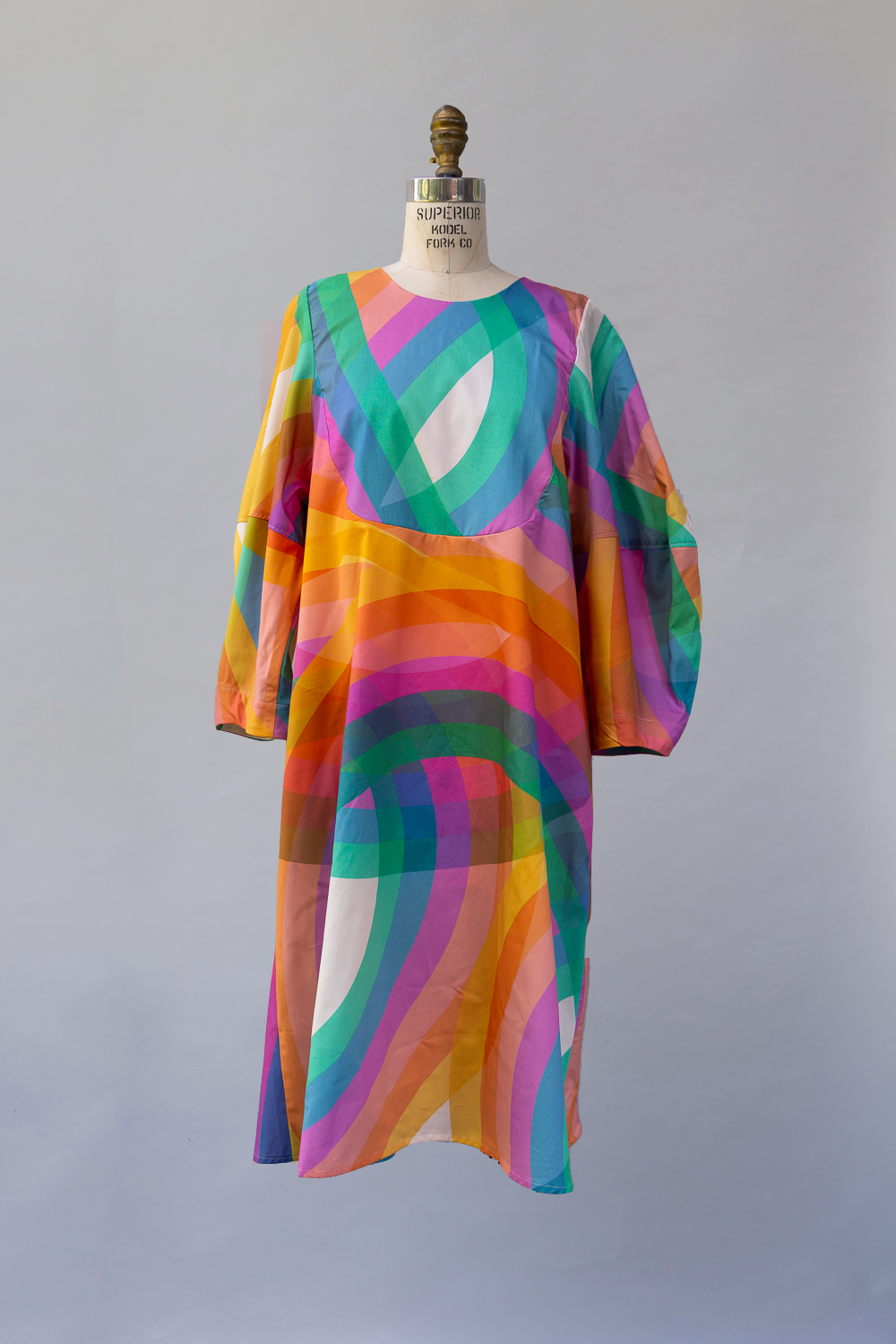bib dress
Based on the “traditional” Holoku, it’s a dress ready for both work and play.
the form
A riff on the “traditional” Holoku, a style made from the dowdy “mother hubbard” style reimagined across Polynesia in bright prints and tropical weight cotton. Its shape, a sharp rebuke to objectification.
Our minimalist version has an elongated bib accompanied with an almost architectural balloon sleeve in a sharp, gather free version. The length is shortened to provide more versatility.
in the details
We source shell and vintage buttons for our clothes. And use finishing touches like sewn down facings and self same fabric pockets and linings. We are committed to these heirloom techniques so our garments last a very long time. Care and craft is what motivates us.
fabric & manufacture
For this form we chose a medium weight BCI* cotton woven with a slightly polished finish. This allows the garment to breathe and cotton is a long lasting, hard wearing staple. It biodegrades and is compostable as well. The fabric is printed in Italy using azo free pigment ink.
*BCI is the Better Cotton Initiative which tracks environmental sustainability and ethical labor practices.
We cut and sew each dress in our barn studio in Upstate NY. We support a MTO (made to order) and limited batch production model. This means that we make each item as it is ordered and cut down on inventory waste.
our prints
Click on any print to read the whole print story.
*can’t find the dress you want in the print you want? Contact us for a special order.

some history.
Around the 1820s missionaries popularized western dress in Hawaii (and greater Polynesia). This shift was bound up with some awful things (colonization…body shame…). However lemons can make lemonade and for us that lemonade is this durable continuum of a dress called Mu’umu’u - a comfortable, unfitted dress often in a bright print with unusual details like back pleating, bib yokes, ruffles, frog clasps, nehru collars, kimono sleeves. These dresses trace their lineage to the Mother Hubbard, a frumpy, bib fronted, full length house dress. Nowadays we experience this form mainly as a nightgown.
During the 1800s the Hubbard form split into two distinct but related entities in Hawai’i. The Holoku—a formal dress with a train (translates as “Go, stop.” meaning it was easy to move in). And the mu’ mu’u—a utility garment to be worn informally (translates as “ To cut off.” meaning it was shortened and had no sleeves so it could be worn as an undergarment). By 1870 the Holoku had evolved so far from its simple Mother Hubbard beginnings, it was considered to be Hawaiian dress.
In the 1890s the Holoku took two forms—a “traditional” Holoku that retained the width, bib, and puff sleeve. And the “fashion” Holoku that was more fitted and incorporated all kinds of influences germane to the fashion of the day along with increasingly longer trains.
In 1949 the Hawaiian garment industry, flush with the success of the Aloha shirt, introduced the Holomu’u (translates as “Go, cut off.” easy to wear and without a train) - a day dress that was fashionable, fitted, ruffled and exportable. This enabled the Holoku to retain its more formal status and its ability to signal “Hawaiianess.”
Whether it’s called a Holoku, a Mu’umu’u or a Holomu’u we see these as a single, inclusive form.
For more read: A Brief History of the Design Evolution of the Hawaiian Holoku and Designs of Hawaiian Wear: an Evolution in History





















